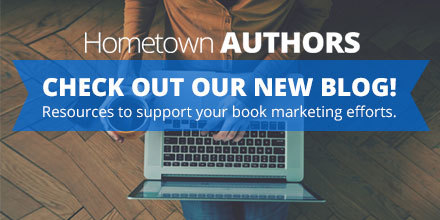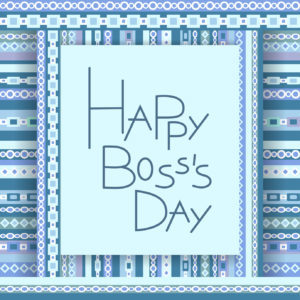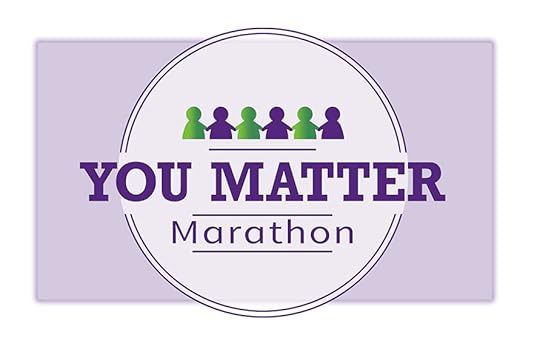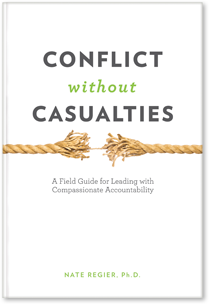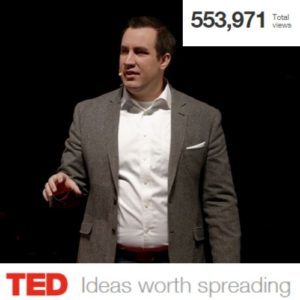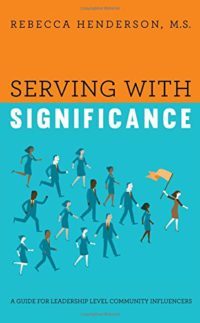Becky Robinson's Blog, page 52
October 21, 2016
Featured on Friday: Introducing Hometown Authors!
Hometown Reads officially launched on March 1, 2016, as a champion of the #ReadLocal movement. Since then, we’ve connected with over 600 authors in cities all across America, and are excited to be showcasing almost 30 cities on our site. That’s a lot of communities connecting through local authors!
The list keeps growing, with more books and cities being added almost every week. And the more it grows, the greater our dream for it becomes!
Now we’re excited to introduce the latest result of our “big dreams” — the new Hometown Authors blog!
Hometown Authors exists to share book launch marketing tips and resources to support authors in fueling the #ReadLocal movement.
We want to inspire and equip authors to be more effective in marketing their books, by sharing helpful advice from seasoned and new authors alike. Everyone’s book marketing journey looks different, but all successful ones have one big thing in common, and that’s community. And that’s what Hometown Reads and Hometown Authors is all about!
Book marketing can be challenging, for sure, but starting where we are — with the relationships we already have — can result in huge returns.
“Book marketing is very hard. Collaborating with others can help.” – Becky Robinson
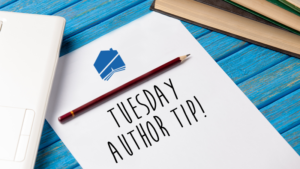
For instance, guest author Leni Pospie, a Hometown Reads author from Cleveland, Ohio, recently shared a bit of her own story as a newly published author. It included a disheartening journey to libraries, school districts, and book stores; but it was her visit to City Hall that really changed her outlook towards her book marketing journey.
Her flash of insight?
Market as if you are training for a triathlon. . . . You may not be able to see the finish line, but the starting line is within sight.
Read the rest of Leni’s post here.
We’d love to hear from other authors too! Do you have advice to share from your own book marketing journey, or specific encouragement for any newly published authors, or know of tools that can help authors connect with their intended audiences? Send us an email, or connect with us on Facebook or Twitter.
And if you haven’t signed up to participate in the #ReadLocal movement yet, why not join today?
If you’re an author who wants to see your book or city featured on Hometown Reads, join here. If you’re a reader who wants to discover great books from your hometown, join here. Or simply browse our current selection of books here!
Tell me something! What’s the last book you read from a local author?
October 20, 2016
Giving Our Lives
This post is part of our 2016 Team Buzz Builder Guest Blogger series. Today we are pleased to introduce you to Greg Richardson, author of the Strategic Monk blog.
October is serious Autumn. Growing season is over. We push ourselves to finish harvesting what we have produced this year. The days are becoming shorter, the air is getting crisper and cooler. It is sweater weather. We are focused on preparing to get through another dark, cold winter.
Soon we will celebrate our holiday of hauntings and hallowed ground. Decorative graveyards are already springing up from yards in my neighborhood. The cooling weather and longer nights draw our attention to our deepest fears, including the spectre of death and dying.
Graveyards and “memorial parks,” even the Halloween versions, remind us that our lives will end. We remember the people who have gone before us, who have given us their examples to follow. We talk about people who have given their lives for a reason, for a purpose. Many of us wonder, deep within, about our own purposes.
It is easy for us to understand that when a person dies in battle, or in a great act of sacrifice, they give their life to accomplish something. It can be far more challenging, perhaps impossible, to see how anyone who dies in an accident gives their life. We may see some deaths as a waste of potential.
It is true that some of us die in ways that are not our own choices, but each of us gives our life.
I know people who give their lives to teach children. They have given every day, year after year, to inspire generations to learn and grow. There are others I know who give their lives to help people make a good living, or to provide medical support for people who need it, or to help people find justice. Their lives are not given in renowned, dramatic sacrifices, but in more regular acts each day.
We pause, taking time in the midst of the pumpkin carving, the costumes, the trick-or-treating, and the parties to remember the people who gave their lives in ways that inspire us.
We are giving our lives. Each day, each hour, is an opportunity for us to make a difference. As we discover our own true selves, we become better equipped to share our true selves with others. As we become better at sharing who we are, we find deeper understanding of ourselves and others. We explore ourselves with reflection and extend our reach to the people around us.
Who is giving their life to inspire you?
How are you giving your life today?

Greg Richardson is a leadership and organizational coach, and a spiritual life mentor, in Southern California. Greg is a recovering attorney, executive, and university professor who follows a monastic rule. He is passionate about bringing out the best in people, listening, and reflection. Greg’s website is StrategicMonk.com and he is on Twitter at @StrategicMonk. You can email Greg at StrategicMonk@gmail.com.
Image credit: aitoff
October 18, 2016
4 Apps for Working Remotely
Working on a remote, distributed team has many advantages – flexibility, the ability to work in your pajamas, a 30 second commute… But it can also be challenging to stay connected and to ensure that everyone has all the information that they need to do their job.
Weaving Influence was my first experience in working entirely remotely. In previous jobs, I had occasionally worked from home for an afternoon or for a day. For the most part, though, I was in the office the majority of the time. When I joined Weaving Influence I had never even met any of the team in person! I quickly came to appreciate the technologies we use to stay connected and to get the work done without being in the same office – or, for some of us, even the same country.
Basecamp
Basecamp is our central information hub for all our projects. Basecamp allows us to organize projects, set due dates, assign tasks, and share information. We can set up templates for projects and control which team members can see which project. Basecamp allows us to upload and share files. Seriously. It’s so helpful. I’d even recommend it for teams who work together in the same physical space!
Slack
Companies all over have the world started using Slack to communicate quickly and effectively. According to Slack’s website, the team that put robots on Mars used Slack. Slack is an all-in-one messaging service that integrates with a number of other apps and programs. I’m sure we’re not using it to its full capacity yet, but Slack has been a great way to connect and build community. We have different channels for different groups for inner-team messages. We also have a few water-cooler channels to help replicate some of the conversation that happens naturally in a physical office.
Google Drive
I can’t say that I have totally stopped using MS Office, but I certainly use Google Docs and Sheets daily. Google Drive allows you to create documents and spreadsheets, share with team members, and store them in the cloud. When you need a place to actually create a file, that’s where we start. Basecamp is great for storing documents once they are final, but Google Drive is where we work on the files themselves.
Video Conferencing
Written communications are great (and needed), but sometimes you can’t convey everything in an email. It’s easy to misinterpret tone in written communications. Phone calls are a definite improvement. Video conferencing is one step better.
According to experts, the vast majority of communication is non-verbal. Eye contact, expressions, gestures, and body language all convey meaning. That’s why video conferencing is so helpful when your team is distributed. We use GoToMeeting, Zoom, and Google Hangouts, but there are other options such as Skype and Facetime.
We do a bi-weekly stand-up meeting via video conference where the whole purpose is to connect and build community. Being able to see each other even for that brief half-hour helps remind us that we are all on the same team working towards the same goals!
What about you? What technologies and apps have you found helpful for working in a remote or distributed team?
Image credit: dedivan1923 / 123RF Stock Photo
October 14, 2016
Featured on Friday: Voicing Appreciation
Are you and your coworkers ready for Boss’s Day?
If you plan to buy a card, make lunch reservations, or order flowers, get moving because the big day is Monday, October 17.
My Boss’s Day Memory
One of my favorite keepsakes from my previous job is a boss’s day card from the people I supervised. Ironically, shortly after I was given this card, I was laterally transferred to a position in which I did not supervise anyone.
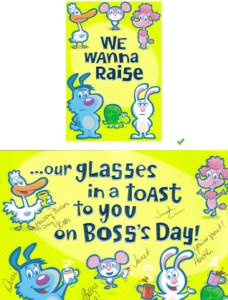
Although I still, seven years later, have not completely found closure with the end of that boss/subordinate relationship, Paul Larsen’s book, Finding Your Voice as a Leader, with its V.O.I.C.E. model, gives me some ideas about how I might have been a more effective supervisor.
You Want Effective? Let Me Introduce You to Becky!
Note …. all that content filled with my own self disclosure I wrote at the beginning of this post ….. everything before “You Want Effective? Let Me Introduce You to Becky!” was a bit of a disguise because I wasn’t sure if our awesome Becky Robinson would be okay with a post that was all about her. But she is awesome and the intent of this is to be all about her, so here goes!
Paul Larsen, author of Finding Your Voice as a Leader, says in order to maximize your potential as a leader, you need to find your individual V-O-I-C-E, your unique brand. He is right! Becky models for us every day how to be true to yourself while also applying strong leadership principles.
Appreciating Becky’s V-O-I-C-E as a leader:
Values
The “v” in this model stands for discovering your core values. Becky was encouraged by Mark Miller to define core values for Weaving Influence early on, and she took that advice to heart. Becky has worked in conjunction with the team to develop corporate values, refine them as necessary, and, most importantly, live them. With apologies for the poor screen shot, one of the first things we see when we sign in to Slack every day is this question:
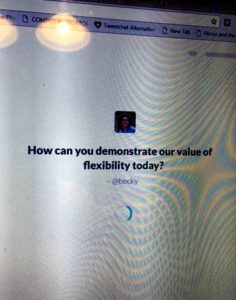
Ask any Weaving Influence team member, and you’ll hear how Becky has encouraged us to embrace our core values of generosity, growth, responsiveness, integrity, partnership, and flexibility.
Outcomes
The “o” in the model has to do with a leader creating a compelling vision to obtain the outcomes they want. At Weaving Influence, the challenge with outcomes is that it would be easy to chase so many targets that we lose focus. As we have matured, Becky as a leader has sought to lead us all to serve well, with focus. While she is an astute businessperson, one of her most laudable qualities is the sheer joy she takes in creating opportunities for others.
Influence
The model’s “i” stands for influence: building relationships with influence and credibility. I could make this a very short passage by pointing out that our name includes the word “influence,” therefore we should consider ourselves covered. However, it must be said that credibility is part of the unique recipe that makes Becky our “head chef.” Maybe she is just the kind of person who values credibility in general. Personally, I think the way she conducts herself has to do with the three lives she is molding as a mom.
Courage
The “c” in V.O.I.C.E. is for courage: making decisions that reveal your courage and confidence to take a stand. Four years ago, Becky wrote The Courage to Emerge: The Apple in the Orchard. In the post, she shared “at times on my leadership journey, I have felt like a solitary stubborn leaf, alone on a branch, isolated and buffeted by the winds, hanging on for life, with no protection from the elements.”
Four years later, Weaving Influence is reaping the benefits of Becky’s courage to risk that lonely branch. We are grateful for this example and the reminder that “we have the ability to give courage to others, even as we look to others to inspire us.”
Expression
The “e” is for expression: communicating your overall expression for lasting impact. Although I am not present at the initial stages of Weaving Influence’s negotiations with authors and thought leaders who want to partner with us, I have the privilege of being a part of helping them launch their books and services into the world as our work together progresses. The work we do, under Becky’s leadership, is an expression of our commitment to our core values, but also helps clients make a lasting impact through cohesive messaging, professionally prepared graphics, and meticulous project management. Becky cares about her work, so she leads us to care about our work, and hopefully the final results demonstrate that.
Learn more about the V.O.I.C.E. model here.
And if there is a boss in your life who has made a difference for you in the way Becky has for me and all of us at the Weaving Influence team, consider adding something else to the cards/flowers/lunches … your voice, telling them how they made a difference for you. That will be their favorite gift of all.

WI Team Members and Jennifer Kahnweiler July 2016
Image: aliaksandra/Fotolia
October 11, 2016
Nine Letters. Two Words. One Transforming Moment.
How many words have been spoken to you in your lifetime? How many words have you said to other people? Impossible to count, right?
There are two words which stand out from the rest. They can be said by a boss, a co-worker, a friend, family member, acquaintance or stranger. What are these two words?
YOU MATTER.
How can these words make a difference?
They Make Us Want to Spread Joy
My daughter did the Disney College Program earlier this year. There are four keys inherent in how a Disney Cast Member serves: Safety, Courtesy, Show, and Capacity.
When a College Program participant went out of her way to soothe a young guest’s distress and turn the situation around into a more magical one, none other than the President of the Walt Disney World Resorts recognized her efforts.
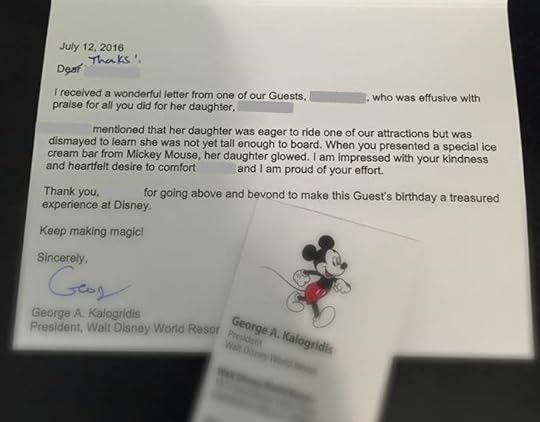
The Disney College Program trains the participants to apply the four keys all the time. Recognition such as the type I’ve shared here is an “extra.”
But how much do you think this extra acknowledgement said “You matter” to the College Program participant? AND she received such special recognition because she made one little girl feel that she mattered. And in doing so, the child’s parents felt that their family mattered.
My daughter shared with me an anecdote about a time she had a truly magical interaction with a guest. The guest didn’t share that feedback with management. While that would have been a fun “extra,” I heard in my daughter’s voice, as she told it, pride in thinking in advance of a way she could make magic at work that night, of how she waited until just the right moment arose, about how she tuned in to the guest’s comments and proceeded to do something that told them they mattered. A “you matter” moment lives on, even if only the people involved in the exchange know it happened. It fortifies one more vulnerable area in someone’s psyche and may be just the impetus for them to make someone else along the line feel they matter too.
This November, You Can Be Part of a Marathon of Kindness
As we mentioned in our last post, you can be part of the You Matter Marathon.
You can join more than 6000 people in 26 countries who are committing to tell someone “you matter,” and back it up with a You Matter card, each day in November. Currently, organizers anticipate the number of You Matter cards distributed to surpass 100,000! That’s a lot of magic!
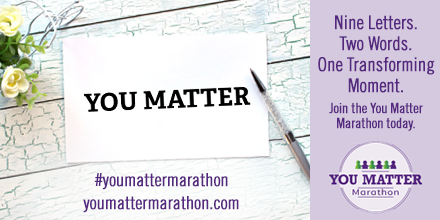
Marathon “Prep”
The good news is the You Matter Marathon doesn’t involve even a single step of running. But just as a runner trains in advance of their event in order to be prepared, we encourage you to prepare as well!
Think About Who You Will Give To.
If nothing else, thinking about the people who matter to you will put you in a great mood!
If you are a parent, think about how the You Matter Marathon might be incorporated into your family’s November plans, perhaps as a new ritual.
If you are an educator, consider the possibilities of a You Matter Marathon taking place among your students.
If you are in a leadership or programming role in a community or religious group, ponder whether or not the entire group might love being part of the You Matter Marathon.
If your business wants a unique way to help people know they matter (Hello?! They do!), think about lining up at the figurative “start line” of this running-free yet very worthy race!
Think About the Realities of Spreading the You Matter Message.
As caregiver for my father-in-law, I will be the first to admit that sometimes the people we most need to tell “you matter” are the hardest ones to approach. Although saying “you matter” to my father-in-law, who will forget within five minutes that I said that, may be a sentiment that quite literally disappears from his head almost as soon as the words leave my mouth, is there a way as part of how I handle my responsibilities to him each day that displays just a little more compassion and a lot less sarcasm? That says “you matter” as much as the You Matter card will.
In addition, participating in an event like the You Matter Marathon demands that we devote time to our fellow human beings. Yeah, I know …. in a perfect world we would all be generous with our time and resources. I loved a story I read in Worth Mentioning recently about a grocery store cashier who was deliberately patient with an elderly customer, even though the line was backing up at his register. Thinking about his patience, she wrote: “So visibly relieved was the woman, I wondered how often she encountered the tired tone, the show of impatience, the sigh of inconvenience that so many busy people use with others who don’t move fast enough to please them. When my friend thanked him for his patience, he told her, ‘It’s easier for me to be patient than it was for her to get that done with people staring at her,’ he said. ‘Also I am a youth counselor with teenagers. You can deal with anyone after that.'”
The cashier mastered the difficult art of “dealing with anyone.” Is there an “anyone” in your life who needs to be told “you matter”?
You have 30 days in which to find that someone, tell them “you matter,” and pave the way for magic to rule the day.
How to Participate in the You Matter Marathon
Sign up by clicking here. (When you sign up, you’ll be sent a link to order “You Matter” cards for $9.99).
Follow the You Matter Marathon via creator Cheryl Rice on Twitter here.
Follow the You Matter Marathon via creator Cheryl Rice on Facebook here.
I can’t wait to find 30 people in my world who deserve to hear “You Matter.” Join me?
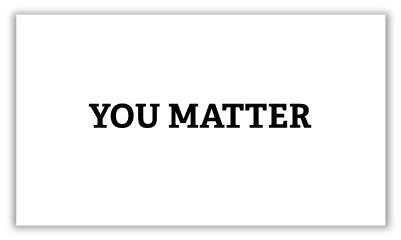
October 7, 2016
Featured On Friday: #YouMatter Marathon
Words matter. We all know that. And hopefully, we’re all striving to make a positive impact with our own words — whether through writing books or articles, speaking and coaching, and even posting on social media. What we say to others can have a huge impact: words can stay with a person for the rest of their life.
We could probably talk for days about specific ways to use our words for good and how to overcome the bad messages we hear. But what if we shifted focus for a month and aimed to share words in a much, much simpler way?
What if sharing just two little words could completely change someone’s life? tweet this
That’s what Cheryl Rice — speaker, coach, and author of the inspiring memoir Where Have I Been All My Life? — wondered after a colleague handed her a simple card last year with just two words on it:
You Matter.
It impressed her so profoundly that she immediately ordered her own set of cards, and started handing them out to friends, coworkers, neighbors, even total strangers. The result? In her own words: “The impact has been magical.”
Now she wants to spread the magic even further, by sparking a “You Matter Marathon” during the month of November.
So what is the #YouMatter Marathon?
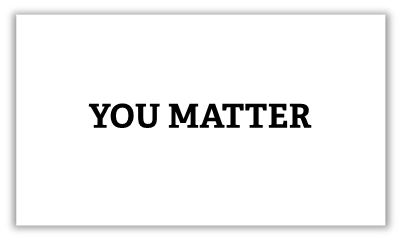
The goal of the You Matter Marathon is to create and enrich positive connections between people and within communities by sharing 10,000 You Matter cards during November.
What better time to tell people how important they are, then during the season of gratitude? And better yet, this is something anyone can participate in, no matter what their role or job title!
For instance:
Parents wanting to add a meaningful gratitude ritual to their holiday gatherings.
Teachers eager to provide a unique and thoughtful Thanksgiving activity.
Community and religious groups interested in building connection among members.
Businesses looking to recognize and appreciate their employees and customers.
Anyone interested in lifting their own spirit!
“We’re living in a world where people crave connection, yet feel more isolated than ever. Every one of us is here for a reason. We are all essential. We need, and are needed by, each other. ” – Cheryl Rice
Join the #YouMatter Marathon – No Running Required.
Weaving Influence is excited to be participating in the You Matter Marathon, and we would love to see you join us. It’s such a simple way to make a difference, and yet it can have such a profound impact!
How can you be a part of this exciting movement?
Learn more about the idea and how it first took root.
Watch the You Matter Marathon in action.
Order your own cards to hand out in November (the first 500 people get 30 cards free!).
Click here to share a tweet about the You Matter Marathon.
Read Cheryl’s blog to discover her passion for sharing this message.
And remember, dear readers: You Matter.
Images used by permission from YouMatterMarathon.com.
October 4, 2016
#ReadLocal: An Author’s Perspective on Hometown Reads
My team and I are proud of the work we’re doing at Hometown Reads. Read about our growth in this recent press release.
In order to share a deeper update with our Weaving Influence audience, we thought we’d interview Heather Manning, a Hometown Reads author who is also an important member of the Hometown Reads team.
Heather, tell us about yourself and your books.
I am currently attending Stephens College to study theatre and performing arts, but in my free time, I am an author of inspirational historical romance with a twist of adventure. My first book in the Ladies of the Caribbean trilogy, Swept to Sea, was published with Clean Reads Publishing when I was 16 years old. A couple of years later, its sequel, Carried Home, was released. This year, I am finishing up work on my third novel, Tossed Together.
How did you find out about Hometown Reads?
I first heard about Hometown Reads through an article in my local newspaper, The Kansas City Star. I was very excited about the opportunity to put my book on Hometown Reads, so I immediately found the Hometown Reads website and joined.
What has worked well for you in marketing your books?
I have learned that marketing is a trial-and-error process that is different for every author. I have found much success with marketing my books through Facebook parties and a video blog that I keep on Youtube. I feel that it’s very important for the reader to feel like they personally know an author.
What challenges have you faced in marketing your books?
Most recently, I have faced the challenge of not having enough time to market my books. Life gets very busy, and unfortunately, a simple thing like marketing your books will sometimes get pushed aside. I am working to correct this by scheduling my time more efficiently to balance work, school, and writing/marketing.
What do you see as the benefits of authors participating in Hometown Reads?
Hometown Reads is such an amazing opportunity for authors! My publisher always tells us to NEVER pass up an opportunity for free promotion, because every bit of publicity helps. Hometown Reads helps authors get traction in their own town, where readers are more likely to pick up their book if they know the author is from their town. I think it is such a cool concept.
What do you do as a team member at Hometown Reads? What part of your work do you love most?
I do a lot of things at Hometown Reads, from outreach and customer support, to editing and publishing pending books, or writing promotion tweets about authors’ books. My favorite part of work, though, is definitely the outreach aspect of it. I love finding new authors and helping them join Hometown Reads.
It’s been great to have an author adding her thoughts to our brainstorming process. I’m thrilled that Heather joined our team, and excited to see continued momentum for Hometown Reads!
If you’re an author who would like to see your Hometown featured, add your book by signing up at hometownreads.com/join.
September 30, 2016
Featured On Friday: #CompassionateAccountability With @NextNate
Drama. It’s not just for opening nights, matinees, and red carpets. If you have ever worked as part of a group, you have undoubtedly encountered drama at one point or another. Nate Regier is an expert at using conflict to create growth and harness potential, rather than allowing conflict to manifest itself into destructive drama.
Having experienced my fair share of drama over the course of my career, I was intrigued to learn about Nate’s concept of Compassionate Accountability. Believing that the key to constructive conflict is compassion, Nate helps people seek out and address drama not only in those around us, but also in ourselves (gulp ….).
In his book, Conflict Without Casualties, Nate brings us the collective intelligence of Next Element, the firm he co-founded that serves as international advisor to high-value change agents. This book embodies the lessons of Leading out of Drama,® Next Element’s suite of training and certification tools.
“Everyone likes to talk about accountability; few people know how to execute it compassionately.” – Nate Regier, Ph.D.
MEET NATE REGIER

Nate grew up the son of missionary parents in Botswana and Zaire, where he developed his passion for service, love of people, and fascination with the common needs that tie all people together. Having grown up amidst political unrest, poverty, and apartheid has helped form his global perspective. While in Botswana during high school Nate competed on the Botswana Jr. Davis Cup tennis team and achieved a world ranking in doubles.
A native Kansan, Nate completed his undergraduate work at Bethel College in Newton, KS and his PhD in clinical psychology from University of Kansas. He practiced clinical psychology for 11 years where he developed his skills in social-emotional intelligence, group dynamics, mind-body-spirit health, and neuropsychology. In 2008 he joined three other colleagues to form Next Element, where they leveraged their expertise in the social sciences to help leaders in the corporate arena. He specializes in interpersonal and leadership communication, executive assessment and coaching, organizational development, team building and change management.
An international advisor, he is a certified LOD® master trainer, PCM® certifying master trainer and co-developer of Next Element’s Leading Out of Drama® training and coaching system. He was the principal driving force behind the design and validation of NEOS,® Next Element’s flagship outcomes measurement tool. He co-authored Next Element’s first book, Beyond Drama: Transcending Energy Vampires. He publishes a semi-weekly blog, writes for a variety of local and national publications, and is a sought-after keynote speaker.
Read more at Next Element and connect with him on Twitter.
LEARN MORE ABOUT CONFLICT WITHOUT CASUALTIES
Life and work are a constant tug of war when people struggle against each other or with themselves to get what they want, causing relationships and entire systems to unravel. It doesn’t have to be that way. The concepts and tools the book shares can turn conflict into a partner for positive change.
In true field guide fashion, it becomes the central reference point for Next Element’s work across the world.
If you’re considering purchasing Conflict without Casualties to change the dynamic at work, plan to get double your money’s worth. Your personal relationships will never look the same. In the book, Nate invites readers to replace the unrealistic, sometimes punishing, even crushing demands they exact on both colleagues and loved ones with openness, resourcefulness and persistence.
Check out the early praise for Conflict Without Casualties…
“Conflict Without Casualties fills a gap by showing leaders at any level how to leverage positive conflict. Practical, insightful, challening, relevant.” – Dan Pink
“A must read, this book offers a simple, powerful model for transforming conflict, drama and negative energy into compassionate accountability and a stronger, more united team. Conflict can help a team grow when utilized propertly. This book shows you how.” – Jon Gordon
JOIN THE CONVERSATION
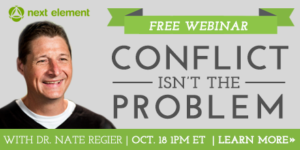
Nate will be joining Becky Robinson for an interactive discussion entitled Conflict Isn’t the Problem on October 18. To learn how cultures of compassionate accountability can leverage the energy of conflict to create rather than destroy, and realize tremendous new potential, you’ll want to participate.
Register here.
SUPPORT THE LAUNCH
Buy the book if you haven’t already!
Write about it on your blog and send us the link so we can share it.
September 27, 2016
Changing the World Takes Time
At the start of every client engagement, even before we sign a contract, we work with clients to identify their big picture goals and priorities. What does success look like? What can we accomplish together that will make our engagement a worthwhile investment? One of the things I say, probably more than anything else, is that growing online influence is a result of focused, consistent effort. To make a difference, you have to bring value, consistently over time. For a long time.
I felt encouraged recently while listening to Brené Brown’s latest book, Rising Strong. In talking about her vision for her career, she mentions in a side note that “the experience has been more than I imagined sixteen years ago when my husband, Steve asked me. ‘What’s the vision for your career?’ and I answered ‘I want to start a global conversation about vulnerability and shame.'” (italics, mine)
Did you get that? Sixteen years.
Brené is widely admired and read. She’s a best-selling author. She’s a sought-after speaker and world-changing difference-maker. But she’s no overnight sensation. In the years before she became well known, she built the foundation needed to create and sustain a global conversation through consistent work in creating and sharing her valuable content in the world.
There aren’t any short-cuts to influence, resonance, and reach. To truly make a difference, you have to be willing to do the work, over time, for a long time.
It’s possible that when Brené shared her career vision with her husband that she realized how audacious it sounded. When I ask clients about their goals, I often hear a similar refrain: I want to start a movement. I want to reach the world with this message. I want to change the way people think about x,y,z. I want to change the world.
I’ve had the privilege to watch several clients/friends grow their influence over time, going from mostly-unknown to hugely influential. David Burkus, a friend I met back in 2009 when I talked with him as one of the early guests on his podcast, recently showed up on the homepage of TED, amassing over 500,000 views of his talk about salary transparency. Do the quick math on that; David’s been at this for 7 or more years. He’s sold tens of thousands of copies of his first two books and is under contract, writing his third. He’s been blogging, tweeting, and podcasting about messages that matter to him for nearly a decade. His success at age 30 is impressive, but he’s not finished. I can only imagine the continued influence he’ll have at the sixteen-year mark and beyond.
Another influential client is Bob Tiede, a career staff member at Cru. We’ve been partnering with him to grow his influence through his work at leadingwithquestions.com. Through the release of a free ebook in English and Spanish, he’s seen his email list grow by 400% or more. His following on Twitter and Facebook continues to grow incrementally, month over month. The people in Bob’s network are consistently finding value in the content he creates. As they share his work with their networks, Bob’s influence swells.
If your vision for your future involves starting a global movement or igniting a world-wide conversation, my best advice is to take a long-term view. Show up today, with the influence you have already, and share content of value while connecting with others. Do it again tomorrow, the day after that, and every day into the foreseeable future. This is the only path I know to creating the influence you most long for.
Tell me something! What value are you sharing today that will move you toward your desired future?
September 23, 2016
Featured on Friday: #ServingwithSignificance with @rebeccainjc
Every once in a while, we like to highlight what some of the amazing people in our Team Buzz Builder community are accomplishing. This week, we turn the spotlight on member Rebecca Henderson and her recently published book, Serving with Significance: A Guide for Leadership Level Community Influencers. Published in June of this year, this five-star book is already making headlines. In fact, it was just added to the required reading list for a public policy class at UNC-Chapel Hill!
Meet the Author
Rebecca Henderson has a B.S. in business administration and an M.S. in community leadership. The academic experience, combined with more than three decades of volunteer leadership experience on more than two dozen boards of directors, ranging in scope from local to international, gives her significant expertise in nonprofit leadership. She holds the Thanks Badge, Girl Scouting’s highest honor, served a two-year term on the board of directors of the Association of Junior Leagues International, and was named one of Milligan College’s Leaders in Christian Service in 2015. She currently serves as a consultant at Strategic Priorities Consulting, and loves strategic planning, organizational development, and geeky things like bylaws and parliamentary procedure.
Discover ‘Serving with Significance’
“Anyone can become a positive and effective leader; the only requirement is the desire to serve others.”
“Many books on volunteerism and leadership are more theory than practice. Serving with Significance is full of easy-to-follow tips that can be implemented immediately by its readers. Although some people are lucky enough to be born leaders, leadership is a skill that can be learned. Like most skills, the more it is practiced, the better one gets.
The concept of volunteerism at its very roots is changing the community and the world in which we live. Serving with Significance is designed for every type of group, from formal to informal, local to international, prayer group to professional group, social to humanitarian, and especially membership-based organizations. While the primary audience is that of the nonprofit sector, nearly all of the tips that follow are equally applicable in a corporate setting of any size.
Leading the charge toward making a positive difference in the world is one of the few opportunities that every person can take advantage of at any point in his or her life. Serving with Significance is the inspirational and motivational guide that will show you how to achieve this life-changing goal in very relevant and measurable ways.”
Read what others have said about the book
“This is one of those books that you can open randomly on any page and find a pearl of wisdom.” – Shar McBee
“Serving With Significance is a gem. The size and format makes it incredibly easy for busy leaders to read … I was impressed with how the insights seemed to layer themselves one top of each other. I felt like I was growing as a leader.” – Marc
“A golden nugget full of great insight for anyone at any level of community involvement.” – Carter Manning Wade
“Each page is a statement. Each statement is significant.” – Amazon Customer
Support Our Featured Member
Connect with Rebecca on Twitter or Facebook.
Buy the book on Amazon.
Add it to your list on Goodreads.
Want to be a part of our amazing Team Buzz Builder community? Join here.

